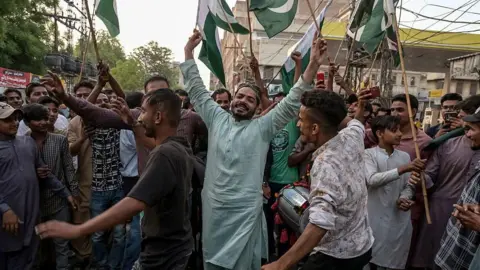India Pakistan Ceasefire Agreement: Background, Mediators, and Future Outlook
Recent weeks have seen renewed attention on the India Pakistan ceasefire agreement after alarming escalations along the Line of Control (LoC). The truce has offered a crucial pause, but questions remain about its long-term durability. This article explores the context of the agreement, the influence of international mediators, and the sentiments on the ground.

Origins and Background of the Latest Ceasefire
The conflict over Kashmir has been the primary cause of tension between India and Pakistan for decades. After a violent flare-up that included missile strikes, drone attacks, and significant shelling, both nations took steps to halt further escalation. The India Pakistan ceasefire agreement was announced after four days of intense clashes, which resulted in dozens of civilian casualties and widespread displacement in border regions.
According to Al Jazeera’s live coverage, although both governments initially traded accusations of ceasefire breaches, the truce has largely held since its implementation. The United Nations and more than 30 countries publicly welcomed the agreement, with many urging both sides to open dialogue about lingering disputes such as Kashmir.
The Role of Backchannels and International Mediators
A unique feature of this recent truce is the extensive involvement of external mediators. As detailed by the BBC, US diplomatic efforts, backed by UK and Saudi mediation, played a pivotal role in brokering peace. US Secretary of State Marco Rubio’s direct calls with officials in both countries are credited with averting a wider conflict. Experts believe the US’s strategic relationship with both India and Pakistan allowed it to serve as a credible intermediary at a tense moment.
This level of international coordination stands out compared to previous crises. Pakistani officials acknowledged that the intervention by global powers guided the process. Tanvi Madan, a fellow at the Brookings Institution, highlighted that, "At least three countries were working to de-escalate — the US, but also the UK and Saudi Arabia." For more, see this in-depth BBC analysis.
On-the-Ground Realities and Local Perspectives
While the India Pakistan ceasefire agreement brought relief, people living in border areas remain wary. Many families fled their homes during the fighting and are reluctant to return before stability is assured. As reported by Al Jazeera, some villagers regard the ceasefire as fragile and, at best, a temporary measure. Locals express hope for lasting peace but acknowledge a deep sense of uncertainty. "In the end, even after war, it all comes back to dialogue," said one resident of Pakistan-administered Kashmir.
Visuals from the region show damaged homes, celebrations at the announcement of the truce, and children returning to villages. However, rebuilding will take time, and security concerns persist on both sides of the LoC.
Prospects for Long-Term Peace
The durability of the India Pakistan ceasefire agreement remains uncertain. Both governments have voiced commitment to the accord, but mutual accusations of violations indicate underlying mistrust. As highlighted by observers, the speed with which the agreement was made means that robust guarantees may be lacking. Still, international mediation and broad diplomatic support may help reinforce the current calm and encourage longer-term dialogue.
For ongoing developments and expert perspectives, readers can follow Reuters coverage and Al Jazeera’s live blog.
Conclusion
The recent India Pakistan ceasefire agreement demonstrates the potential for diplomacy to avert disaster, even in one of the world’s most volatile regions. While the situation on the border remains tense, the willingness of both sides to engage, combined with a concerted international response, brings hope. For lasting peace, ongoing dialogue and addressing core disputes — especially the Kashmir issue — must become priorities.